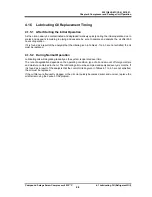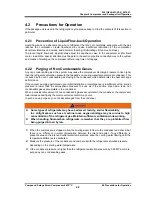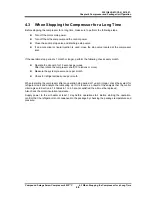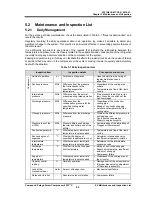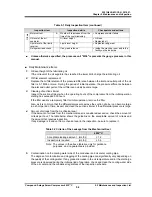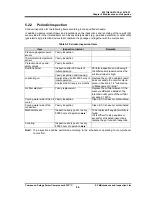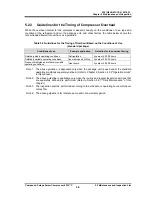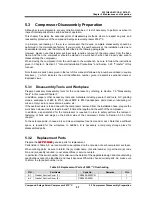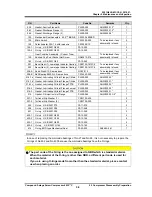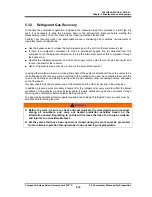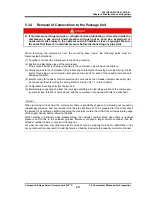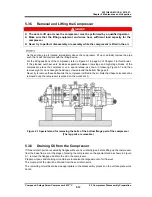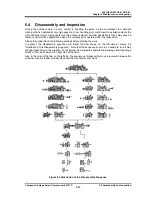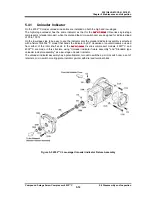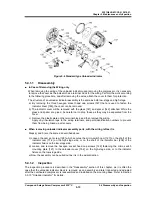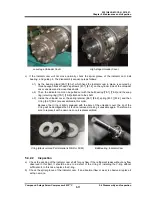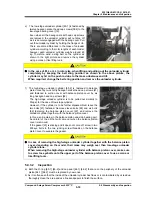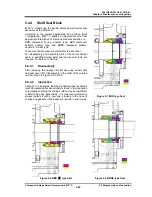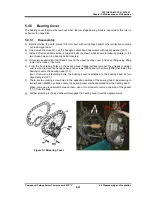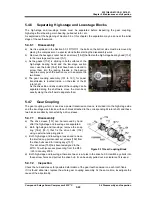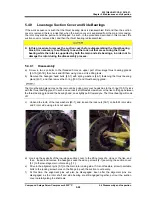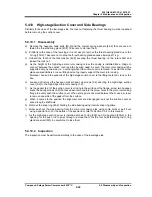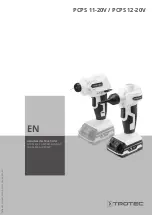
2201Q4JE-MY-C9-N_2018.01.
Chapter 5 Maintenance and Inspection
Compound 2-stage Screw Compressor 4032**C
5.3 Compressor Disassembly Preparation
5-12
5.3.5
Removal and Lifting the Compressor
The work to lift up or move the compressor must be performed by a qualified operator.
Make sure that the lifting equipment and wires have sufficient load capacity for the
compressor.
Never try to perform disassembly or assembly while the compressor is lifted in the air.
As the suction pipe is located immediately above the compressor, lift up or partially remove the pipe
such that it will not interfere with the lifting device.
For the lifting positions of the compressor, refer to Figure 3-1 in page 3-3 of Chapter 3 in this manual.
If the planned overhaul work includes separation between low-stage and high-stage blocks of the
compressor, place the compressor on a special stand as shown in following Figure 5-1 and then
remove eight or more hexagon head cap screws around the bottom flange part.
Never try to remove these bolts while the compressor is lifted in the air. Note that these bolts cannot be
removed once the compressor is placed on the work bench.
Figure 5-1 Special stand for removing the bolts of the bottom flange part of the compressor
(The leg parts are movable.)
5.3.6
Draining Oil from the Compressor
If three oil drain ports are sealed by flanges without any oil drain pipes, before lifting up the compressor
from the base frame or at the stage of placing the compressor on the special stand as shown in Figure
5-1, remove the flanges and drain the oil in the compressor.
Prepare oil pans and draining oil containers to receive the large amount of oil flow out.
The most part of the oil will be drained from these oil drain ports.
The remaining oil will be drained as appropriate in the disassembly process on the surface plate work
bench.

